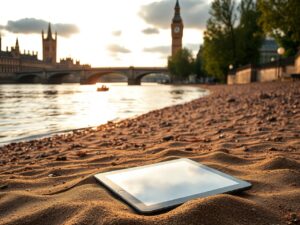[imagesource: REUTERS/Hannah McKay]
From the start of the pandemic, we were encouraged to practice physical distancing. It started with the elbow tap greeting and evolved into the two metre rule.
Two metres is the recommended distance that we should maintain between ourselves and others.
This is just one of the ways that COVID-19 has fundamentally changed the way that we interact with the outside world, but until a recent review broke ground, the distance between us was just an estimate.
The Guardian reports on the review of dozens of studies, prepared for the World Health Organisation, and recently published in The Lancet.
The authors of the Lancet paper analysed nine studies involving 7,782 participants relating to physical distancing across the three viruses, reaching conclusions with “moderate certainty”.
…It found that keeping a distance of more than 1 metre from other people reduced the risk of infection to 3%, compared with 13% if standing within a metre.
However, the modelling also suggested that for every extra metre further away up to 3 metres, the risk of infection or transmission may halve.
In other words, standing two metres apart can significantly reduce your chances of contracting COVID-19. Make it three metres, and your risk reduces even further.
The researchers also wade into the debate about face masks. Based on evidence from 10 studies involving 2,647 participants, they found that the risk of infection or transmission when wearing a mask was 3% compared with 17% when not wearing a mask, although they said the level of certainty was “low”.
Similar benefits were found, also with low certainty, concerning wearing of protective eye coverings such as face shields, goggles and glasses.
This isn’t the first study that has looked into the benefits or efficacy of wearing face masks.
The recommended distance is based on the idea that when people cough and sneeze, the droplets will travel no more than two metres before dropping to the ground – although some believe that this could be an underestimate.
Prof Holger Schünemann from McMaster University in Canada, who co-led the research, told the Guardian: “We have a suggestion here that 2 metres might be more effective than 1 metre distance. And what that would mean is if one were to implement a policy, and particularly if 2 metres were already in place, 2 metres may be the right policy to undertake.”
A debate is underway between business owners and the government in Britain over the two-metre rule, because the only way to maintain it is to operate with a reduced workforce, which in turn deprives some people of an income.
The UK currently requires a physical distance of two metres at all times, and face masks in “enclosed spaces” where physical distancing may be difficult, such as on public transport or in some shops.
You can read about alert level 3 employer responsibilities in South Africa, here.
When it comes to a highly infectious disease, it’s always better to be safe than sorry.
[source:guardian]





